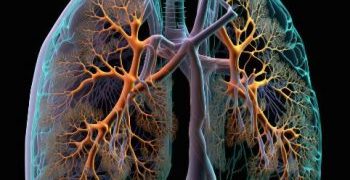Muscle atrophy is the thinning or loss of muscle tissue. The process can happen when you are older, have a health condition or aren’t using your muscles as much as you should be. Some muscle atrophy symptoms are tingling, numbness or weakness in your limbs or arms and hands. You may also have problems swallowing or speaking because you don’t have enough muscle.
There are three types of muscle atrophy: physiologic, pathologic and neurogenic. Physiologic (or disuse) atrophy usually starts within two to three weeks after you don’t use your muscles as much. This type of atrophy can be reversed by exercising and getting enough nutrition.
Pathologic atrophy occurs in conditions such as aging and diseases like Cushing disease (when you take too much corticosteroids). It can occur after an injury or surgery. It tends to be more severe than neurogenic atrophy and may develop more suddenly.
Signs of denervation and reinnervation
Chronic (long-term) denervation of muscles results in a progressive atrophy of the underlying muscle fibers. These changes are mainly due to the loss of neuromuscular transmission between nerve terminals and muscle fibers.

In this situation, the axons don’t send signals back and forth to the brain. This means that your brain can’t tell your muscles to move.
This also causes your muscles to lose strength and flexibility, and they can’t contract as well. It can make it harder for you to walk, climb stairs or lift objects.
Your healthcare provider can help you with exercises and a healthy diet to prevent muscle atrophy. They may also recommend physical therapy. Your physical therapist will put electrodes on your skin over your muscles and send small electrical impulses to them.
Then, the muscle will try to exercise or contract to heal itself. The physical therapist may also use ultrasound to try to increase your muscle strength.
You can also get treatment for your muscle atrophy with physical therapy, a healthy diet and certain medicines. Your healthcare provider can also recommend treatments to slow the muscle atrophy process, such as a procedure called spinal cord stimulation.
How long does muscle atrophy last?
The amount of time it takes for your muscles to atrophy depends on your age, fitness level and cause of the atrophy. It can take a few months or even years for muscles to atrophy after a severe injury, illness or surgery.
When you are able to exercise, your muscles will regain their strength and flexibility. This will help you improve your overall health and feel better.
Your healthcare provider can also recommend certain medicines to help your muscles recover faster. These medications may be taken regularly or in certain amounts over a period of time.
Some of these medicines are used to treat nerves or blood vessels that have been damaged. Your healthcare provider can prescribe these medicines to you or have you take them by mouth.









